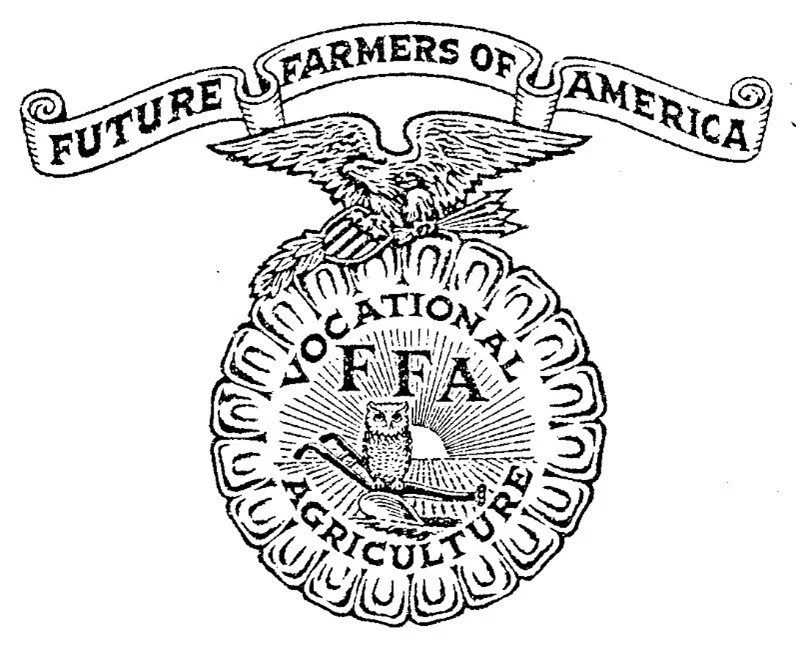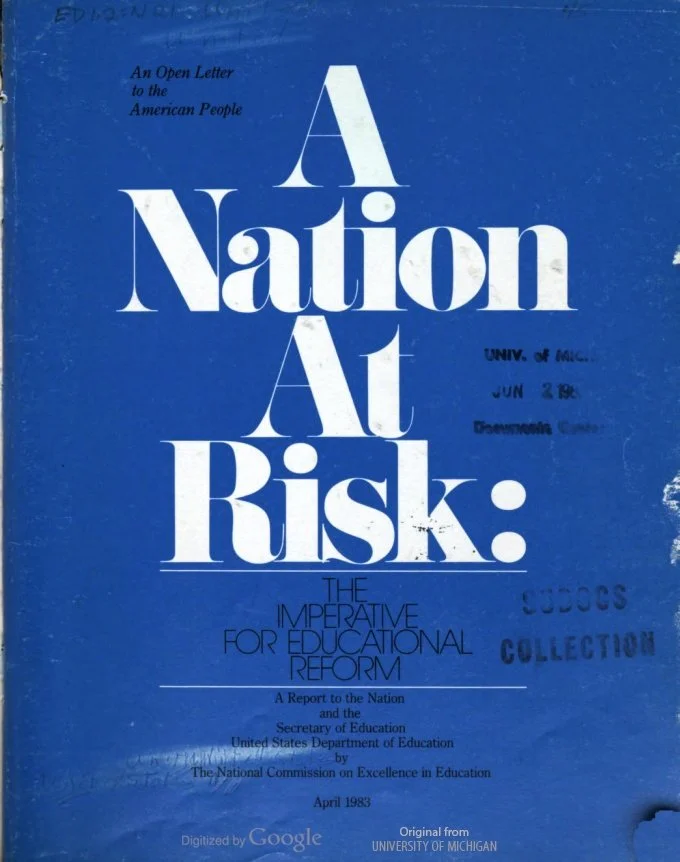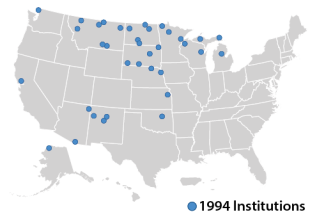History
The National Council for Agricultural Education, established in 1983, serves as the coordinating leadership organization for shaping and strengthening school-based agricultural education (SBAE) across the United States. It emerged in response to growing national concern over the need for consistent advocacy and coordination among the various organizations involved in agricultural education. Initially housed within the U.S. Department of Education, The Council later became an independent body supported by its member organizations. Its formation brought together leaders from the National FFA Organization, the National Association of Agricultural Educators (NAAE), the Association for Career and Technical Education (ACTE), and others to ensure alignment of efforts in curriculum development, teacher preparation, and student engagement.
Agricultural education in the United States has deep roots, significantly shaped by landmark legislation and visionary leaders. The Morrill Act of 1862 laid the groundwork by establishing land-grant colleges to provide practical education in agriculture and the mechanical arts. The Smith-Hughes Act of 1917 marked a turning point by providing federal funding and formally integrating vocational agriculture into public school curricula, launching organized agricultural education nationwide. Visionaries like Seaman A. Knapp, Booker T. Washington, George Washington Carver, Rufus Stimson, Henry Groseclose, and Larry Case advanced the field through innovative teaching methods and advocacy. The founding of the Future Farmers of America—now the National FFA Organization—in 1928 further empowered youth by blending leadership development with agricultural education. Later legislation, such as the Vocational Education Act of 1963 and the Carl D. Perkins Acts (1984, 1990, 1998, 2006, 2018), continued to support and expand career and technical education, helping agricultural education remain a dynamic field responsive to modern career and educational needs across the broad fields of agriculture, food, and natural resources. These individuals and milestones together laid the foundation for a strong, evolving system that continues to serve diverse communities across the nation.
1785 - The First Agricultural Society was formed
The Philadelphia Society for Promoting Agriculture was founded - the first of its kind in the United States. This society laid out the groundwork for the future of agricultural education through advocacy and the sharing of knowledge.
1862 - Morrill Land Grant Act
Granted federal land to each state to fund colleges focused on agriculture and mechanical arts. The act blazed the trail to formally incorporate agriculture into higher education.
1887 - Hatch Act
Initiated by Congressman William Hatch of Missouri, this act established agricultural experiment stations at land-grant universities. These stations were used to conduct scientific agricultural research to address local farming challenges. Results from these stations were shared through Extension services.
1890 - Second Morrill Act
Required states to either integrate land-grant institutions or establish separate ones for African Americans. It created Historically Black Land-Grant Universities (commonly called 1890 institutions). This opened access to agricultural education for African American students in segregated regions.
1914 - Smith-Lever Act
Created the Cooperative Extension System, a nationwide partnership among federal, state, and county governments. Extension agents taught communities about new farming methods, home economics, nutrition, and youth development (4-H).
1917 - Smith-Hughes Act
Initiated by Senator Hoke Smith and Representative Dudley Hughes from Georgia, this act funded vocational agriculture education in secondary schools to prepare students for employment in farming and related careers. Agriculture became a permanent part of public school curricula and led to the development of supervised agricultural experiences (SAEs) and FFA.
1928 - Future Farmers of America (FFA) was Founded
Students and educators from across the nation formed the organization to promote leadership, personal growth, and career success through agricultural education. It is now called the National FFA Organization and is a core part of the three-circle model of ag education.
1944 - GI Bill
Allowed WWII veterans to access free college education, including agriculture programs. Its impact fueled growth in agricultural colleges, universities, and the educated rural workforce.
1950s-70s - Green Revolution
The transfer of agricultural technology and education made its way to developing countries. Schools and international extension programs taught high-yield crop practices.
1963 - Vocational Education Act
The Vocational Education Act of 1963 expanded the scope and modernized the agriculture curriculum to include topics that would eventually grow into horticulture, food science, natural resources, and the like.
1983 - “A Nation at Risk”
The National Academies of Science published “A Nation At Risk: The Imperative for Educational Reform.” It called for significant revisions in education leading to curriculum modernization, additional changes in CTE, and eventually, standardized curriculum and assessment.
1983 - National Council for Agricultural Education
Since its inception in December 1983, The Council has provided leadership for stakeholders in agriculture, food, fiber, and natural resource systems education. The original logo, shown here, was updated to the one you see elsewhere on the site in 2023.
1988 - “Understanding Agriculture: New Directions for Education” (The Green Book)
The National Academies of Science convened a panel of experts to review agricultural education. “Understanding Agriculture” was the product of the study and prompted expansion, modernization, and standardization of the agriculture curriculum, FFA, and SAE.
1980s - Rise of Agribusiness & Biotechnology
Agricultural Education shifted beyond traditional farming and introduced topics like agriculture economics, food marketing, biotechnology, horticulture, and environmental policy. This prepared students for careers across the agri-food industry.
1994 - Third Morrill Act
The 1994 Morrill Act extended land-grant status to Tribal Colleges and Universities.
2000s - Integration of Technology in Agricultural Education
Use of new technology tools like simulators, mobile apps, and remote monitoring tools were being used in classrooms. Online degrees and certifications in ag-related fields were being used.
2002 – National Career Clusters Framework
Advance CTE collaborated with the federal Department of Education and state CTE leaders to develop the first National Career Clusters Framework. Agriculture is included as one of the 16 career clusters. The Framework was most recently updated in 2024.
2005 - Curriculum for Agricultural Science Education
The Council, in collaboration with state leaders of agricultural education, launched CASE 4 Learning, an inquiry-based agricultural curriculum for middle and high school classrooms.
2009 - National Agriculture, Food, and Natural Resources Content Standards
The Council launched the National AFNR Content Standards, which outlined the expectations for learning in and about agriculture for grades 8-14.
2009 - Teach Ag
The Council and NAAE started the national Teach Ag campaign to recruit and retain agriculture teachers across the nation.
2015 - SAE for All
The Council initiated SAE for All, a modernization and expansion of work-based and experiential learning in agriculture, food, and natural resources.
2016 - National Quality Program Standard
The Council launched the National Quality Program Standards (now, National Program Benchmarks) to establish guidance on starting and improving local agricultural education programs.
2019 - FFA Charter revision, Public Law 116-7
With the 2019 FFA Charter amendments, FFA took ownership of its own governance and clarified relationships with the U.S. Department of Education.
2020s - Innovation, Sustainability, and Belonging in Ag Education
Educational programs highlighted AI in agriculture, urban farming, food justice, and career readiness for agriculture. Schools implemented cross-disciplinary learning in and outside of school-based agricultural education programs.
























